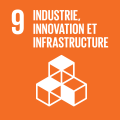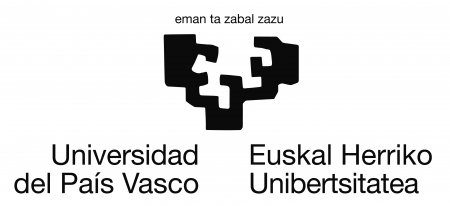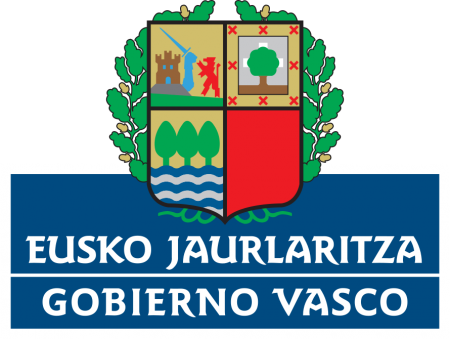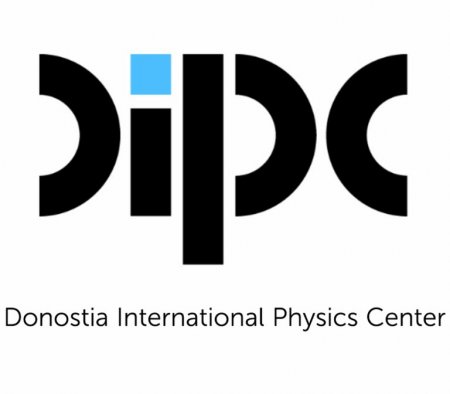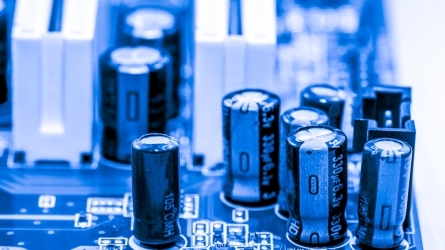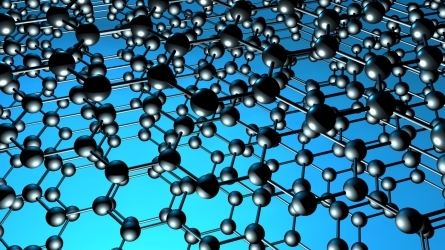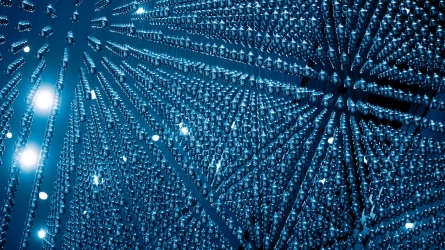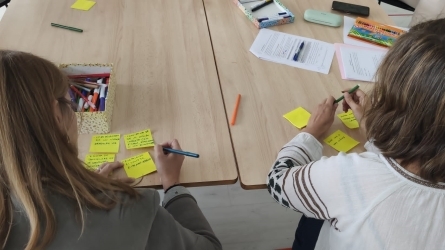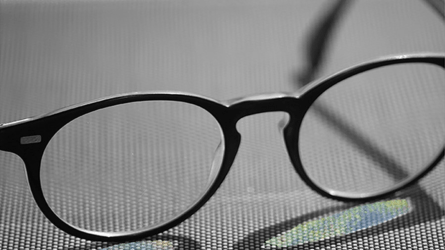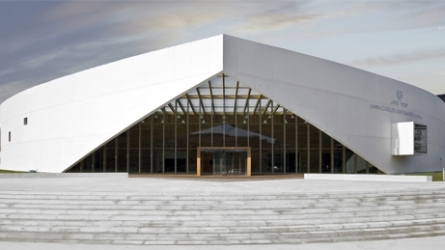
Nuevas tendencias en dinámica de sistemas cuánticos complejos 2022
Descripción
En nuestra era de la ciencia cuántica, donde los dispositivos cuánticos tolerantes a errores aún no están disponibles, pero los dispositivos cuánticos de escala intermedia ruidosa (NISQ) son accesibles, las herramientas de información cuántica para guiar su desarrollo juegan un papel fundamental. Con la creciente complejidad prevista de los dispositivos NISQ disponibles, sus simulaciones clásicas, que impulsaron su desarrollo hasta ahora, pronto dejarán de mantenerse al día. Por lo tanto, existe una necesidad urgente de herramientas de diagnóstico cada vez más poderosas que se puedan aplicar a dispositivos cuánticos incluso en el régimen de ventaja cuántica. En el centro de los algoritmos inspirados en la cuántica se encuentran las redes de tensores, uno de los paradigmas más poderosos para simular sistemas cuánticos de muchos cuerpos, tanto dentro como fuera del equilibrio, a través de una representación del estado cuántico con una función de onda variacional. Los resultados de este congreso serán una herramienta esencial para avanzar en nuestra comprensión de los efectos dinámicos y fuertes correlaciones en la materia cuántica en la era NISQ. Nuestra actividad reúne a los líderes del campo en teoría y experimentación, y con un enfoque interdisciplinario que aprovecha la experiencia combinada de investigadores de las tecnologías cuánticas (QT) atómicas, moleculares y ópticas (AMO) y la física de altas energías. Este congreso reúne a varios actores clave que influirán en el desarrollo futuro de los líderes en QT. Los resultados mostrados en este congreso tendrán aplicaciones que van desde la física de la materia condensada a la física de altas energías hasta la teoría de la información cuántica, facilitando el diseño de nuevos materiales y reacciones químicas aún más eficientes.
Objetivos
Este congreso internacional mostrará una ciencia multidisciplinaria avanzada altamente colaborativa y un proyecto de ingeniería innovadora con el potencial de iniciar y fomentar nuevas líneas de tecnologías cuánticas:
- Simulación y computación cuántica: las charlas previstas en el congreso mostrarán nuevas formas de utilizar las plataformas cuánticas existentes y aplicarlas a materia condensada, química, alta energía, entre otras.
- Ciencia de la información cuántica: las charlas previstas en el congreso mostrarán herramientas paradigmáticas para analizar y estudiar sistemas cuánticos con fines de información cuántica.
- Detección cuántica: las charlas previstas en el congreso mostrarán herramientas para analizar y estudiar la detección de campos magnéticos con espectroscopia de super-resolución.
Los impactos esperados del congreso son:
- Desarrollar una comprensión fundamental y práctica más profunda de los sistemas y protocolos para manipular y explotar la información cuántica con las charlas invitadas y contribuidas y la sesión de posters.
- Identificar nuevas oportunidades y aplicaciones a impulsar a través de tecnologías cuánticas, creando sinergias entre los investigadores más importantes de la comunidad.
- Mejorar la interdisciplinariedad al cruzar las fronteras tradicionales entre disciplinas para ampliar la comunidad involucrada en abordar estos nuevos desafíos, con esta actividad en persona.
COMITE ORGANIZADOR:
- S. Montangero (Padova Univ.)
- J. Prior (Murcia Univ.)
- E. Rico (UPV/EHU & Ikerbasque)
COMITE LOCAL:
- M.G. Echevarria (UPV/EHU)
- I.L. Egusquiza (UPV/EHU)
- G. Schnell (UPV/EHU & Ikerbasque)
CALENDARIO / AGENDA
- Febrero 2022, se abre el registro de participación.
- Abril 2022, se anuncian las charlas contribuidas y posters aceptados.
- Mayo 2022, se cierra el registro de participación general.
PRESENTACIÓN (CONTRIBUCIÓN ORAL O POSTER):
Para presentar una contribución oral o un póster, envíe un correo electrónico a enrique.rico.ortega@gmail.com con el asunto "congress submission" donde se indica el título, resumen y referencias de la posible contribución (oral o póster). Fecha límite, 15 de abril.
Durante la cena de la conferencia, jueves por la noche, anunciaremos primer y segundo premio al mejor poster, apoyado por Entropy (https://www.mdpi.com/journal/entropy)
Público objetivo al que está dirigida la actividad
- Alumnado universitario
- Profesorado
- Profesionales
Directores
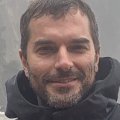
Enrique Rico Ortega
UPV/EHU - Ikerbasque
He estado trabajando en el campo de la física cuántica teórica en una amplia gama de temas que van desde la preparación de estados topológicos exóticos en sistemas abiertos hasta implementaciones de teorías de gauge en el retículo utilizando átomos ultrafríos. He hecho contribuciones clave a una gran cantidad de proyectos y las ideas de mi investigación con mis colaboradores han abierto nuevas direcciones en varios temas de actualidad de física cuántica en materia condensada, física atómico-molecular-óptica cuántica. Para dar un ejemplo, en mi trabajo reciente sobre la simulación cuántica de las teorías gauge en el retículo, con mis colaboradores, hemos presentado un nuevo enfoque para problemas fundamentales de la física de altas energías. En 2015 me trasladé a Bilbao con el prestigioso y competitivo puesto de investigador Ikerbasque. Actualmente tengo un puesto fijo en la UPV / EHU con un puesto de investigador asociado Ikerbasque.
Ponentes

Natalia Ares
Natalia Ares is an Associate Professor at University of Oxford. Her group follows two main research directions. The more fundamental is focused on exploring how the laws of thermodynamics are revised at the nanoscale. With this aim, they use electromechanical devices which are cooled down to milliKelivin temperatures as nanoscale engines. This research could reveal the cost of quantum information processing and help us understand dissipation and thermalisation in quantum systems, improving the engineering basis of quantum technologies by allowing fully informed choices on device design and optimisation. The other focus of Natalia’s group is the development of machine-learning-based approaches for quantum device control in real time. One of their most recent achievements was to demonstrate fully automatic tuning of semiconductor quantum dots across different device architectures. This work is aimed at reducing the cost, time, and effort involved in the control of quantum devices, which constitute a major bottleneck to the advancement of quantum technologies.
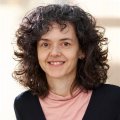
Mari Carmen Bañuls
MPQ & MCQST
The focus of my research is the development and application of Tensor Network (TN) methods for the numerical simulation of quantum many-body systems. The term TN States has become a common one in the context of numerical studies of quantum many-body problems. It refers to several families that represent different approaches for the efficient description of the state of a quantum many-body system. The paradigmatic application of these techniques, in the context of condensed matter physics, has been the solution of one-dimensional spin problems using Matrix Product States (MPS). This family of states lies at the basis of the Density Matrix Renormalization Group method, which has become the most precise tool for the study of one-dimensional quantum many-body systems in regimes where analytical tools cannot be used. But the potential of TN extends far beyond such problems, and promising extensions include the natural generalization of MPS to higher dimensions and applications to dynamics.

Alejandro Bermudez
CSIC
I am a Ramon y Cajal research fellow (5+2 year contract equivalent to a tenure track in the spanish research system) in the Theoretical Physics department of the Complutense University of Madrid (UCM). I am part of the group of quantum information and computation (GICC), where we do research on various theoretical aspects related to quantum technologies. Research interests: Quantum Information and Computation, Quantum simulations, Quantum Many-body systems, Strongly-coupled Quantum Field Theories
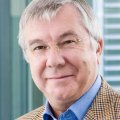
Rainer Blatt
Universitat Innsbruck & IQOQI & Alpine Quantum Technologies GmbH
Rainer Blatt’s research focuses on trapped ions as a means to address fundamental questions in quantum optics, spectroscopy, and quantum information science. In the laboratory, individual ions are confined in electromagnetic traps under ultrahigh vacuum, and their electronic states are manipulated and probed using laser beams. Experiments in his group, including the demonstration of quantum gates and highly entangled ion strings, have established that ions are outstanding candidates for quantum bits in a quantum computer. Current research themes include the investigation of light-matter quantum interfaces, the scalability of ion traps for quantum information processing, and the use of trapped ions to simulate quantum processes.

Giuseppe Clemente
DESY Zeuthen
Giuseppe Clemente is a member of the new Centre for Quantum Technology Applications (CQTA) and ZPPT group at DESY-Zeuthen. He has worked on Monte Carlo simulations and spectral methods applied to lattice quantum gravity (causal dynamical triangulations) and lattice QCD. His recent research activity focuses mainly on applications of quantum computing techniques to problems of interest for high-energy physics such as estimating averages of canonical ensambles for systems affected by the sign problem, and investigating short-scale properties and the running coupling behavior of lattice gauge theories.

Marcello Dalmonte
SISSA & ICTP
The main research interest of Marcello Dalmonte is the investigation of many-body phenomena motivated by atomic and molecular systems. Such systems pose, from the one hand, new challenges in the spirit of theoretically understanding of complex phases of matter and, form the other hand, an ideal platform to investigate and simulate novel physical phenomena in controlled environment. Lately, his research activity has been mostly devoted to the physics of quantum gases confined in low-dimensionality, and to the development of quantum engineering tools in search for topological phases and emergent gauge symmetries. Research interests: Many-body theory of synthetic quantum systems Theory of low-dimensional quantum systems Entanglement witnesses and measures from a statistical mechanics perspective Tensor network based numerical methods Real-time dynamics of lattice gauge theories Quantum simulation strategies for many-body problems

Zohreh Davoudi
Maryland Center for Fundamental Physics and Department of Physics, University of Maryland
Zohreh Davoudi is an assistant professor of Physics at the University of Maryland, College Park. She received her Ph.D. in 2014 from the University of Washington in Seattle, and shortly thereafter joined Massachusetts Institute of Technology's Center for Theoretical Physics as a post-doctoral research associate. While at the University of Maryland, she was also a fellow of RIKEN's Center for Accelerator-based Sciences from 2017-2020. Davoudi studies strongly interacting systems, such as hadrons and nuclei, using analytical and computational methods including effective field theories, lattice quantum chromodynamics, quantum simulation, and quantum computing. Her recent work involves analog, digital, and hybrid approaches to simulating quantum field theories on trapped-ion quantum platforms.
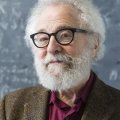
Gary Goldstein
Tufts University
Gary R. Goldstein is Professor in Theoretical high energy and nuclear physics, Science and society, and Science education. His research interests are: Theories of fundamental constituents of matter, Quantum Chromodynamics, tests of the Standard Model and beyond, the role of spin and angular momentum in particle interactions at medium and high energies. The role of science in public policy; non-proliferation of nuclear arms; education for peace.
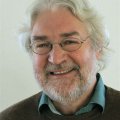
Karl Jansen
DESY
Karl Jansen is a member of the ZPPT group at DESY. He has worked on lattice field theory computations on state-of-the-art supercomputers and is the spokesperson of the Extended Twisted Mass Collaboration. Dr Jansen has pioneered TN and quantum computing simulations for lattice field theory. Dr Jansen has been a Heisenberg Fellow of German Science. Member of the NIC research group 'Elementary Particle Physics' located at DESY Zeuthen. Research Interests: Lattice Field Theory, Turbulence, Theoretical Biology.
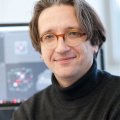
Fedor Jelezko
Institute for Quantum Optics, Ulm University
Fedor Jelezko – director of the Institute of Quantum Optics and fellow of the Center for Integrated Quantum Science and Technology (IQST) at Ulm University. His research interests are at the intersection of fundamental quantum physics and application of quantum technologies for information processing, communication, sensing, and imaging. Professor Jelezko makes the control of single atomic scale systems in solid state environments possible. Coherent control techniques similar to nuclear magnetic resonance are combined with ultrasensitive optical detection of single atoms. The focus of his pioneering work is on extremely pure, artificially produced diamonds. Jelezko’s research is essential for highly precise sensors and new imaging-technologies.
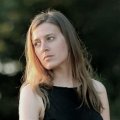
Zala Lenarčič
Jozef Stefan Institute
Nonequilibrium dynamics provides an unprecedented point of view onto the interacting many-body systems. I am fascinated by that approach because it builds the understanding through surprising connections; via thermalization we can learn a lot about the non-ergodic systems, emergent time-scales can actually give information on the interactions between different subsystems, while some extraordinary properties can be triggered or accessed only by driving. Nonequilibrium as a research topic seems inexhaustible since almost all applications of correlated matter use or rely on nonequilibrium situations. In my past projects I addressed diverse set of topics: Reviving integrability in realistic materials. Critical properties of many-body localized (MBL) systems in open setups. Unravelling of interactions between different degrees of freedom in correlated materials. Dielectric breakdown of Mott insulator.

Fernando Luis Vitalla
Instituto de Nanociencia y Materiales de Aragón, INMA, CSIC-Universidad de Zaragoza
Fernando Luis received his PhD from the University of Zaragoza (Spain) in 1997, with a thesis on the phenomenon of spin quantum tunneling. Between 1998 and 2000, he worked as a Marie Curie postdoctoral researcher at the Kamerlingh Onnes Laboratory of the University of Leiden (The Netherlands), and then as a Ramón y Cajal researcher at the Spanish Council of Research (CSIC). Since 2003, he has held a permanent appointment with CSIC at the Institute of Nanoscience and Materials of Aragón (INMA). His research activity focuses on the study of magnetic molecular clusters, with a special interest on phenomena such as quantum tunneling, quantum coherence and quantum phase transitions, which occur near the absolute zero, and on the application of these molecular spins to quantum computation.
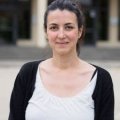
Maria Jose Martínez Pérez
Instituto de Nanociencia y Materiales de Aragón, INMA, CSIC-Universidad de Zaragoza
María José Martínez is a researcher at the Instituto de Nanociencia y Materiales de Aragón. Her work focuses on the integration of magnetic nanomaterials in superconducting circuits and the development of ultrasensitive nanoSQUID sensors working under high magnetic fields and in a wide range of frequencies. On the other side, her group investigates the integration of magnonic cavities based on topological magnetic solitons for quantum sensing applications.
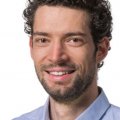
Hannes Pichler
Universitat Innsbruck & IQOQI
The research group led by Hannes Pichler is interested in theoretical quantum optics, in the context of quantum many-body physics and quantum information processing science. We strive to push the frontier of quantum technology by developing novel applications and quantum computing protocols for near-term quantum devices, focussing on quantum optical systems, such as Rydberg atom arrays, waveguide QED setups, and ultracold atoms. To achieve this goal, our research spans a wide spectrum, from microscopic modeling of the physics of specific quantum devices, to understanding their emergent quantum many-body phenomena. It builds on a variety of analytical and numerical techniques from quantum optics, quantum information, and condensed matter theory.
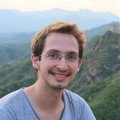
Martin Ringbauer
Institut fur Experimentalphysik, Universitat Innsbruck
Martin Ringbauer's research focuses on new ways to use trapped ions for quantum computing and quantum simulation. Current devices use merely a fraction of their potential and trapped ions, in particular, offer a wonderfully rich and highly controllable playground to explore. Making full use of the available Hilbert space, allows us to go beyond linear qubit programming towards efficient problem-tailored quantum information processing. This research spans a wide range from using high-dimensional Hilbert spaces for quantum computing, simulation and error correction, to the development of novel tools for the characterization and certification of quantum devices.
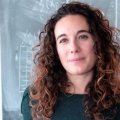
Sofia Vallecorsa
CERN
Dr. Sofia Vallecorsa is a CERN physicist with extensive experience on software development in the High Energy Physics domain. Dr. Vallecorsa coordinates the Quantum Computing area of the CERN Quantum Technology Initiative, recently established. She is also responsible for Deep Learning and Quantum Computing research within CERN openlab (http://openlab.cern.ch) which is a unique public-private partnership between CERN and leading ICT companies. Before joining openlab, Dr. Vallecorsa has been responsible for the development of Deep Learning based technologies for the simulation of particle transport through detectors at CERN and she has worked on code modernization projects in the field of Monte Carlo simulation.
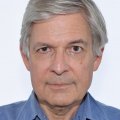
Andreas Schäfer
Regensburg University, Germany
Andreas Schäfer is professor at the University Regensburg in Germany. He works on various aspects of QCD, including Lattice QCD (being a member of the CLS, LPC and RQCD collaborations) and perturbative QCD (being a member of the DFG FOR 2926 research group) but also on information theoretical problems linked to QCD, in particular the problem of decoherence and thermalization in a high energy heavy ion collision, using AdS/CFT and other techniques. He presently spends a sabbatical at University of Bilbao.
Precios matrícula
| Matrícula - asistencia presencial | Hasta 17-06-2022 |
|---|---|
| 250,00 EUR | |
| 0 EUR |
| Matrícula - asistencia online en directo ZOOM | Hasta 17-06-2022 |
|---|---|
| 175,00 EUR | |
| 0 EUR |
Lugar
Centro Carlos Santamaría
Plaza Elhuyar, 2. 20018- Donostia / San Sebastián
Gipuzkoa
Centro Carlos Santamaría
Plaza Elhuyar, 2. 20018- Donostia / San Sebastián
Gipuzkoa
Objetivos de desarrollo sostenible
Desde UIK queremos aportar a la consecución de los Objetivos de Desarrollo Sostenible (ODS) 2030. Para ello, hemos identificado a qué objetivos contribuyen nuestros programas. Puedes consultar los objetivos a continuación.
La Agenda 2030 es la nueva agenda internacional de desarrollo que se aprobó en septiembre de 2015 en el seno de Naciones Unidas. Esta Agenda pretende ser un instrumento para la lucha a favor del desarrollo humano sostenible en todo el planeta, cuyos pilares fundamentales son la erradicación de la pobreza, la disminución de las vulnerabilidades y las desigualdades, y el fomento de la sostenibilidad. Es una oportunidad única para transformar el mundo antes del 2030 y garantizar los derechos humanos para todas las personas. Esta agenda marca 17 objetivos.
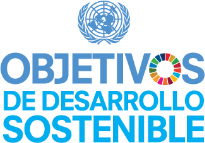
9 - Industria, innovación e infraestructura
Construir infraestructuras resilientes, promover la industrialización inclusiva y sostenible y fomentar la innovación. Cuestiones clave: infraestructuras fiables, sostenibles, resilientes y de calidad, industrialización inclusiva y sostenible, modernización, tecnologías y procesos industriales limpios y ambientalmente racionales, investigación científica y mejora de la capacidad tecnológica, acceso universal a las TIC.
Más información